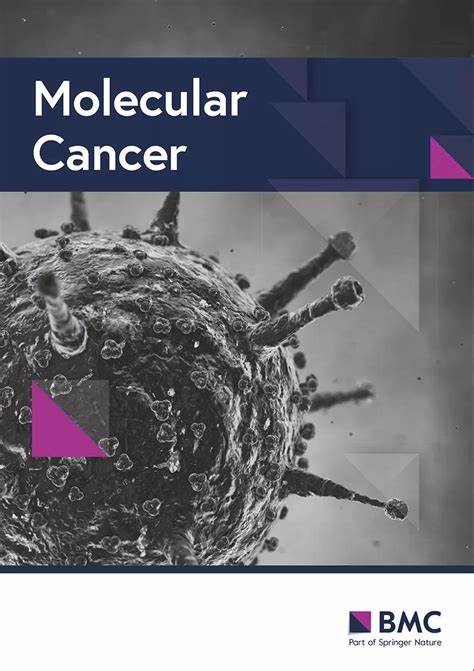在无临床可操作基因改变的肺腺癌中,通过形成基因组结构异常的超级增强子实现 ERBB2 基因过表达的机制
IF 33.9
1区 医学
Q1 BIOCHEMISTRY & MOLECULAR BIOLOGY
引用次数: 0
摘要
在对肺腺癌(LUADs)进行的广泛基因组分析中,驱动突变被认为是分子疗法的潜在靶点。然而,仍有一些病例的靶基因未被确定。超级增强子和结构变异经常在每个病例的几百个位点中被发现。尽管如此,大多数癌症研究都是单独分析这些数据集,而没有对数据进行合并和比较,也没有对 LUAD 进行综合分析的实例。我们对一组 174 例缺乏临床可操作基因改变的 LUAD 病例中的超级增强子和结构变异进行了综合分析。为此,我们利用有驱动基因突变和无驱动基因突变的样本进行了 WGS 和 H3K27Ac ChIP-seq 分析,从而对超级增强子在 LUAD 病例中的潜在作用进行了全面研究。我们发现,位于这些重叠区域的大多数基因都与已知和以前未知的驱动基因有关,超级增强子的形成导致异常表达,并伴有基因组结构异常。Hi-C和长线程测序数据进一步证实了这一观点。当我们使用 CRISPR-Cas9 诱导结构异常,模拟 ERBB2 基因表达异常的病例时,我们观察到 ERBB2 表达的升高。无论是否存在驱动基因突变,这些异常都与术后复发风险较高有关。我们的研究结果表明,与结构多态性相关的异常基因表达可以促进驱动基因突变和预后因素的识别,从而对个性化癌症治疗产生重大影响,有助于更全面地了解 LUAD 的发病机制。本文章由计算机程序翻译,如有差异,请以英文原文为准。
Mechanism of ERBB2 gene overexpression by the formation of super-enhancer with genomic structural abnormalities in lung adenocarcinoma without clinically actionable genetic alterations
In an extensive genomic analysis of lung adenocarcinomas (LUADs), driver mutations have been recognized as potential targets for molecular therapy. However, there remain cases where target genes are not identified. Super-enhancers and structural variants are frequently identified in several hundred loci per case. Despite this, most cancer research has approached the analysis of these data sets separately, without merging and comparing the data, and there are no examples of integrated analysis in LUAD. We performed an integrated analysis of super-enhancers and structural variants in a cohort of 174 LUAD cases that lacked clinically actionable genetic alterations. To achieve this, we conducted both WGS and H3K27Ac ChIP-seq analyses using samples with driver gene mutations and those without, allowing for a comprehensive investigation of the potential roles of super-enhancer in LUAD cases. We demonstrate that most genes situated in these overlapped regions were associated with known and previously unknown driver genes and aberrant expression resulting from the formation of super-enhancers accompanied by genomic structural abnormalities. Hi-C and long-read sequencing data further corroborated this insight. When we employed CRISPR-Cas9 to induce structural abnormalities that mimicked cases with outlier ERBB2 gene expression, we observed an elevation in ERBB2 expression. These abnormalities are associated with a higher risk of recurrence after surgery, irrespective of the presence or absence of driver mutations. Our findings suggest that aberrant gene expression linked to structural polymorphisms can significantly impact personalized cancer treatment by facilitating the identification of driver mutations and prognostic factors, contributing to a more comprehensive understanding of LUAD pathogenesis.
求助全文
通过发布文献求助,成功后即可免费获取论文全文。
去求助
来源期刊

Molecular Cancer
医学-生化与分子生物学
CiteScore
54.90
自引率
2.70%
发文量
224
审稿时长
2 months
期刊介绍:
Molecular Cancer is a platform that encourages the exchange of ideas and discoveries in the field of cancer research, particularly focusing on the molecular aspects. Our goal is to facilitate discussions and provide insights into various areas of cancer and related biomedical science. We welcome articles from basic, translational, and clinical research that contribute to the advancement of understanding, prevention, diagnosis, and treatment of cancer.
The scope of topics covered in Molecular Cancer is diverse and inclusive. These include, but are not limited to, cell and tumor biology, angiogenesis, utilizing animal models, understanding metastasis, exploring cancer antigens and the immune response, investigating cellular signaling and molecular biology, examining epidemiology, genetic and molecular profiling of cancer, identifying molecular targets, studying cancer stem cells, exploring DNA damage and repair mechanisms, analyzing cell cycle regulation, investigating apoptosis, exploring molecular virology, and evaluating vaccine and antibody-based cancer therapies.
Molecular Cancer serves as an important platform for sharing exciting discoveries in cancer-related research. It offers an unparalleled opportunity to communicate information to both specialists and the general public. The online presence of Molecular Cancer enables immediate publication of accepted articles and facilitates the presentation of large datasets and supplementary information. This ensures that new research is efficiently and rapidly disseminated to the scientific community.
 求助内容:
求助内容: 应助结果提醒方式:
应助结果提醒方式:


